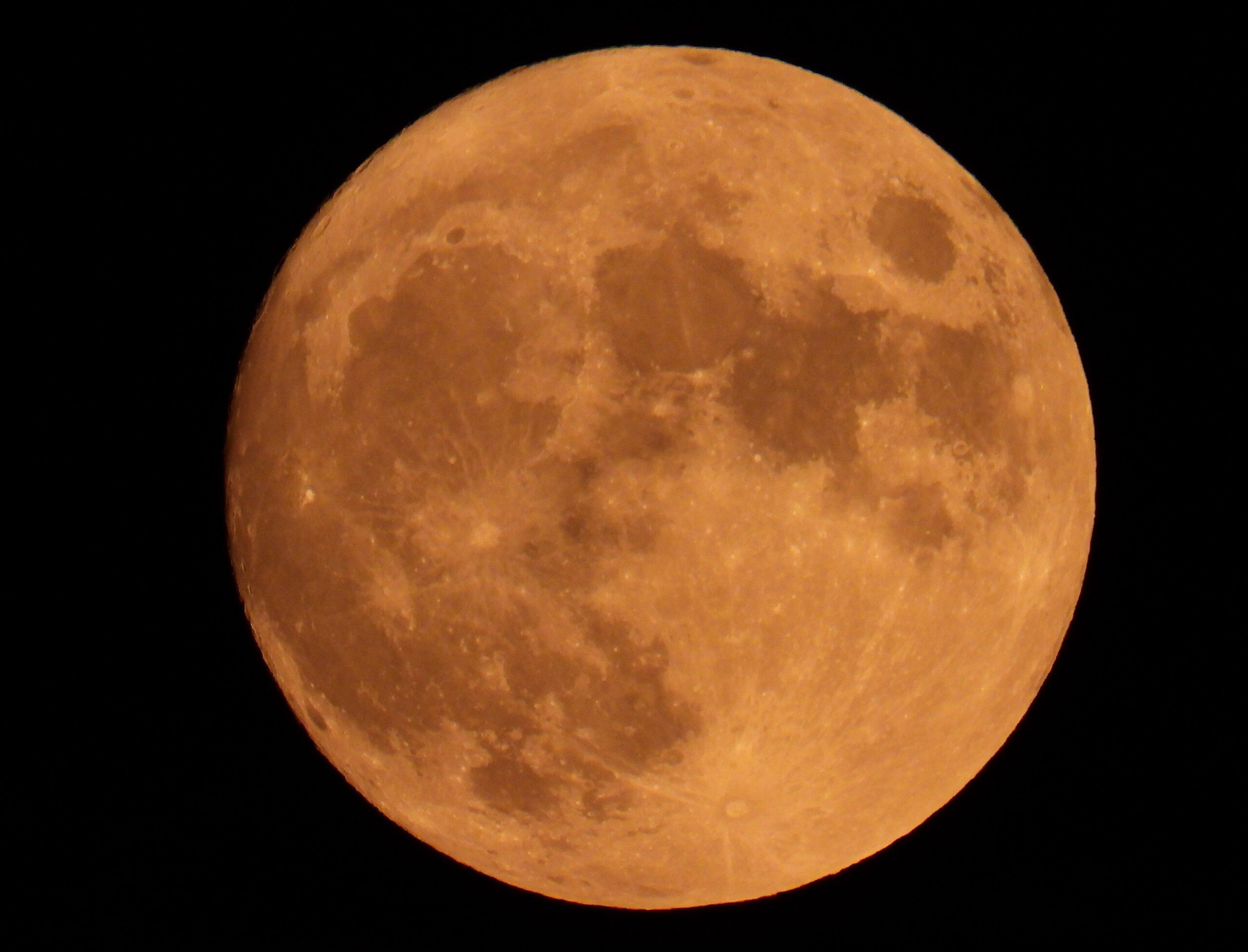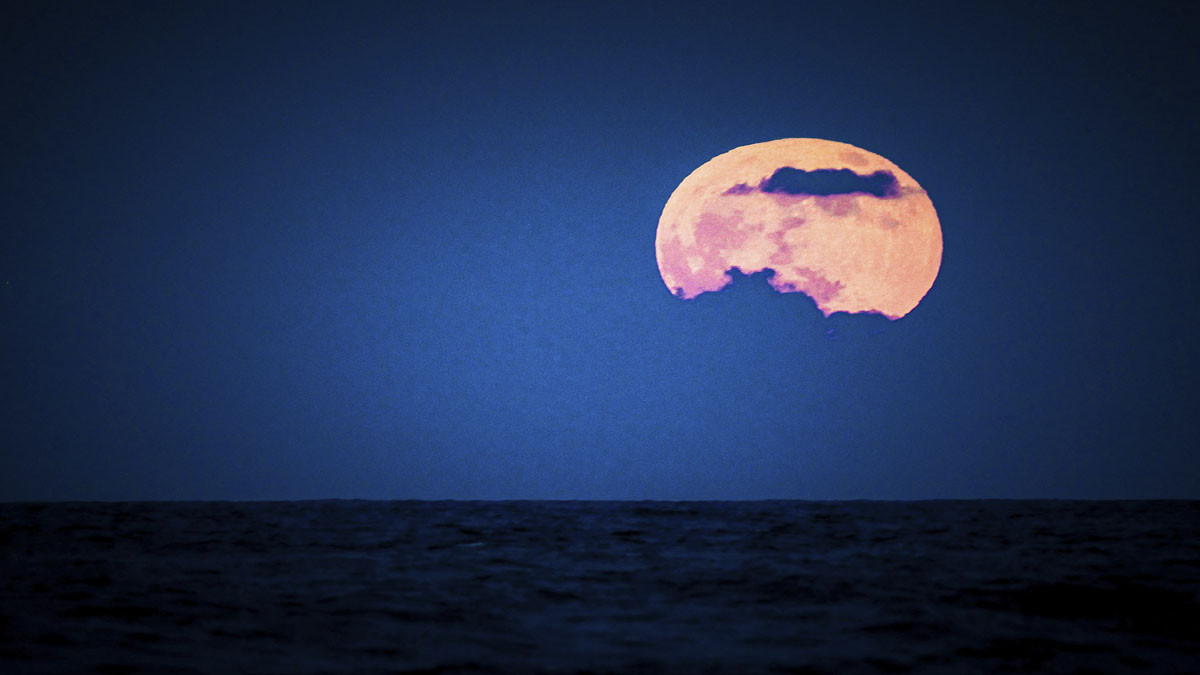Skywatchers have all kinds of reasons to look up at the moon this week.
Not only is September's full moon also a so-called "supermoon" because of its size and brightness, but it's also due to be eclipsed by Earth as it rises into the late-summer skies. And unlike April's total solar eclipse that sparked a nationwide viewing frenzy, those who live in North America don't need to make any last-minute travel arrangements to witness the celestial sight.
Here's what to know about the upcoming partial lunar eclipse and how to see it:
Lunar Eclipse
Lunar eclipses always occur at the full moon phase when Earth is positioned between the moon and the sun.
When those three bodies align, Earth’s shadow falls upon the surface of the moon, dimming it and causing odd changes in its appearance, according to NASA. In the case of a total lunar eclipse, the moon moves into the inner part of Earth’s shadow, or the umbra, which can turn the lunar surface a striking red for a few hours.
But what's happening this week is a partial lunar eclipse, which can still cause the moon to give off a reddish hue.
A partial lunar eclipse occurs when the three celestial bodies do not form a straight line as the moon passes through only part of the umbra while the rest of the moon is covered by Earth's outermost shadow, the penumbra.
Though the shadow grows and then recedes, it never entirely covers the moon, and, thus, only part of it appears red.
Any lunar eclipse can only be seen from half of Earth.
This week's partial lunar eclipse should be visible Tuesday night across the entire northern hemisphere, including North America. For those in the United States, that means all lower 48 states should have a view.
According to NASA, the moon will enter Earth's partial shadow at 8:41 PM EDT, but it's the peak of the eclipse that viewers will want to witness. While the moon will slightly dim around 10:13 p.m., the peak itself will occur at 10:44 p.m.
At that time, a dark shadow will appear at the top of the moon, gradually covering about 8% of it, before receding. The moon will finish exiting the full shadow at 11:16 p.m. and the partial shadow on Wednesday morning at 12:47 a.m., NASA said.
Timeanddate.com offers a detailed eclipse schedule for any location on the planet.
Super Harvest Moon
Adding to the lunar fun: September's full moon, the "Harvest Moon," is also a supermoon.
As one of the biggest and brightest moons of the year, a supermoon occurs when a full moon coincides with the satellite's closest approach to Earth in its elliptical orbit.
For skywatchers, that means this year's Harvest Moon – so named for its historical ties to when crops needed to be picked from the fields – will also be occurring this week from about Monday evening through Thursday morning.
After Tuesday, the next supermoons are Oct. 17 and Nov. 15.
Future Celestial Events
Up next is a “ring of fire” annular solar eclipse, which will be visible Oct. 2.
These celestial events occur when the moon appears slightly smaller than the sun, covering only part of the sun's disk and creating the appearance of a ring of light outlining the moon's silhouette, according to the Planetary Society. Because the moon is at the furthest point from Earth in its orbit during an annular eclipse, the moon appears with a slightly smaller appearance from Earth's perspective.
The "ring of fire" will be visible from parts of South America, the Pacific Ocean, the Atlantic Ocean, and Antarctica. But in the U.S., Hawaii is the only state expected to have a partial view.
As for the next lunar eclipse, it won't be until March 14, 2025 that a total lunar eclipse is visible to the entire United States.
How to Watch the Eclipse Online
If you can't watch the eclipse in person for any reason, there are luckily a number of livestreams available online for you to take in the Super Harvest Moon lunar eclipse.
TimeAndDate.com will host a livestream of the partial lunar eclipse beginning at 9 p.m. ET on Sept. 17 (0100 GMT on Sept 18).
TimeAndDate offers a number of helpful resources for the eclipse, including interactive maps and times based on your location.
Astronomer Gianluca Masi of the Virtual Telescope Project in Manciano, Italy will also host a livestream of the Super Harvest Moon lunar eclipse. The project's livestream will begin at 8:30 p.m. EDT on Sept. 17 (0030 GMT on Sept. 18) and will feature live telescope views of the moon throughout the stages of the eclipse.
The Adler Planetarium in Chicago will also host a lunar eclipse livestream beginning at 10 p.m. EDT , or 9 p.m. CDT local time (0100 GMT on Sept. 18).
Adler Planetarium's livestream will feature astronomy educators offering live commentary on the eclipse as well as helpful tips for viewing the event yourself.


















